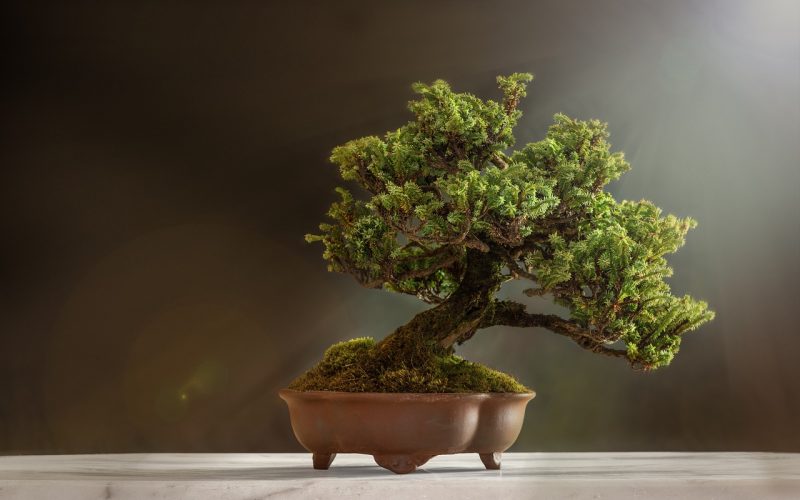Growing Bonsai
The art of bonsai is deeply rooted in Japanese culture, with its history tracing back over a thousand years. The term "bonsai," derived from the Japanese words "bon," meaning tray, and "sai," meaning planting, reflects the practice of growing and cultivating miniature trees in containers.
However, the origins of bonsai can be traced even further back to ancient China, where a similar art form known as "penjing" was practiced. Over time, the Japanese refined the practice, incorporating their aesthetic principles to create what we now recognise as bonsai.
Buddhist monks
The history of bonsai is more than just about aesthetic pleasure; it embodies the philosophical and spiritual ideals of balance, harmony, and patience. The practice of bonsai became popular in Japan during the Kamakura period (1185–1333) when it was introduced by Buddhist monks who used the miniature landscapes to aid their meditation practices.
Over centuries, bonsai shifted from religious symbolism to becoming an integral part of Japanese art and culture, cherished by samurai and the noblemen of the Edo period.
Research and learning
Beginning a bonsai journey presents an engaging and fulfilling hobby that promotes patience, creativity, and a deep connection with nature. First-timers may feel slightly overwhelmed, but starting with the right approach can simplify the process. Research and learning are vital here. Beginners should read extensively about different styles of bonsai and understand the specific species suitable for their environment.
Selecting the right tree species is crucial; beginner-friendly choices include the Japanese Maple, Chinese Elm, or Jade Plant, known for their resilience and adaptability to training. A vital first step is acquiring suitable bonsai tools and supplies, such as pruning shears, wire, and pots, which are essential for shaping and maintaining the tree.
Gradual and mindful training
Patience is a cornerstone of cultivating bonsai, as it's not just about growth but also about gradual and mindful training over years.
This involves pruning the tree—a practice requiring an understanding of how different cuts can direct the tree's growth. Wiring helps in guiding the trunk and branches to achieve the desired aesthetic. Repotting is another critical aspect, done every couple of years to refresh the soil and encourage healthy root systems.
Regular monitoring of water and sunlight needs is essential, as bonsai requires a delicate balance and does not thrive on neglect. Embracing the nuances and techniques of bonsai cultivation can lead to rewarding experiences of nurturing living art.
Basic principles of bonsai
By immersing oneself in the history and basic principles of bonsai, one can develop a profound appreciation for this ancient art form.
Either as a solitary pursuit or as part of a community, bonsai fosters a sense of peace and patience, entwined with the satisfaction of creativity and nature's beauty.





